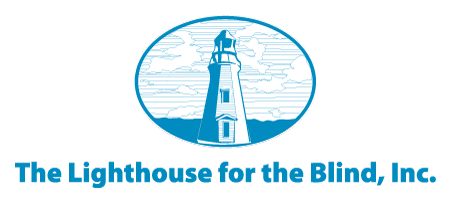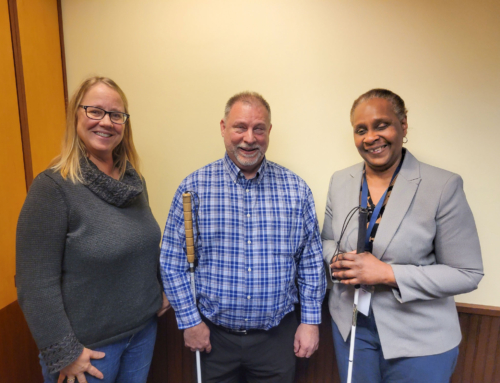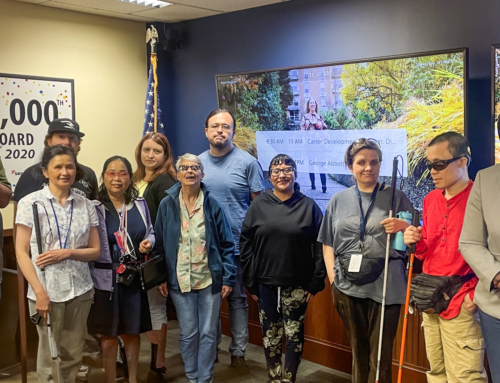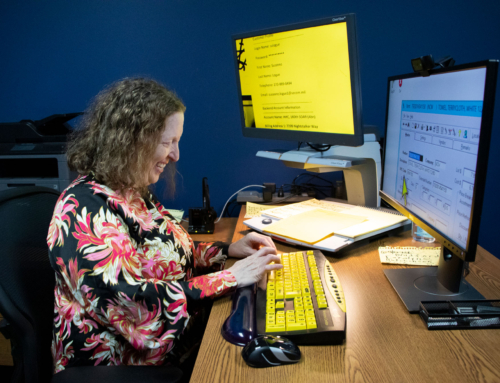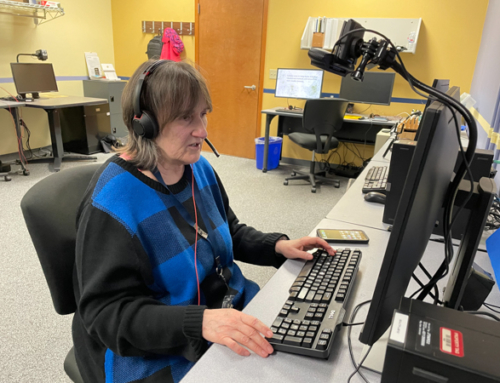“Learning braille is really important,” says Jessica Cummings, Braille Literacy Instructor and developer of the first remote braille training program offered at the Lighthouse. “The thing is, literacy empowers people. Literacy allows people to be more independent. I would go as far as to say, people have a right to literacy!”
While Braille Literacy Month is only celebrated during the month of January, the Braille Literacy Program at the Lighthouse lasts all year.
From tactile to remote braille training
When Jessica was offered the role of Braille Literacy Instructor in January 2021, a global pandemic was already in full swing. She knew that teaching braille at the Lighthouse needed to drastically change.
“My job is to work with interested employees to meet literacy goals through braille,” she describes. Braille training is normally a very tactile activity between the instructor and student. Hands guide hands over a series of raised dots that translate meaning to their reader. Jessica was challenged with a huge task – figuring out a way to teach something so tactile…remotely.
Developing a remote braille training curriculum
There was no better person for the task. “Ultimately, I really like opportunities that improve me as a teacher,” Jessica describes. “My favorite part of my job is when I get to work with clients and problem solve how to make things make more sense to them.”
While braille curriculums already exist, Jessica needed to develop a totally new curriculum that would work remotely.
“I have access to a few different braille curricula that I have used as a framework… but they’re so big! These are designed for sitting down with students in person and having a ton of exercises to go through.”
She explains, “when you’re one-on-one with a student in person, you can pick where to start and where to stop. For our purposes we need something much, much smaller. It needs to be a packet in front of a student who doesn’t know how to read braille yet, so it needs to be really simplified.”
Braille for all levels, at all locations
The students that the Braille Literacy Program serves come from all different backgrounds and abilities. Some students simply need a refresher. Others may have declining vision or a recent eye condition and are learning to read braille for the first time.
“It takes a different kind of motivation to learn braille as an adult. Adults need a different level of motivation to keep up with the studying required to attain fluency in their braille skills,” she shares.
“Sometimes that motivation is, “I’m going to learn braille because it seems like the next step.” Other times they have really strong goals like, “I want to be able to read short documents” or, “I want to be able to label things in my kitchen.” “I want to be able to read a book to my child.” Sometimes there are bigger motivations like, “I want to go to college.”
With the onset of remote braille training, braille services have been able to be expanded to serve all Lighthouse locations.
Braille Literacy
“With opportunities, training, and a support system, people with vision loss can live the lives they want to live. The more resources that are available, the fewer limits that are out there!” Jessica exclaims.
“Literacy is not just about hearing the language. It’s about understanding spelling and formatting and having a full understanding of written communication, and that requires that people have braille under their fingers.”
“Literacy can impact people’s lives. Sometimes learning braille it’s just about being able to label things to be more independent in your house. Sometimes it’s about getting more involved in the community. We know that there’s a correlation between people learning braille and an increased employment rate. So, it can have major impacts on peoples’ lives.”
